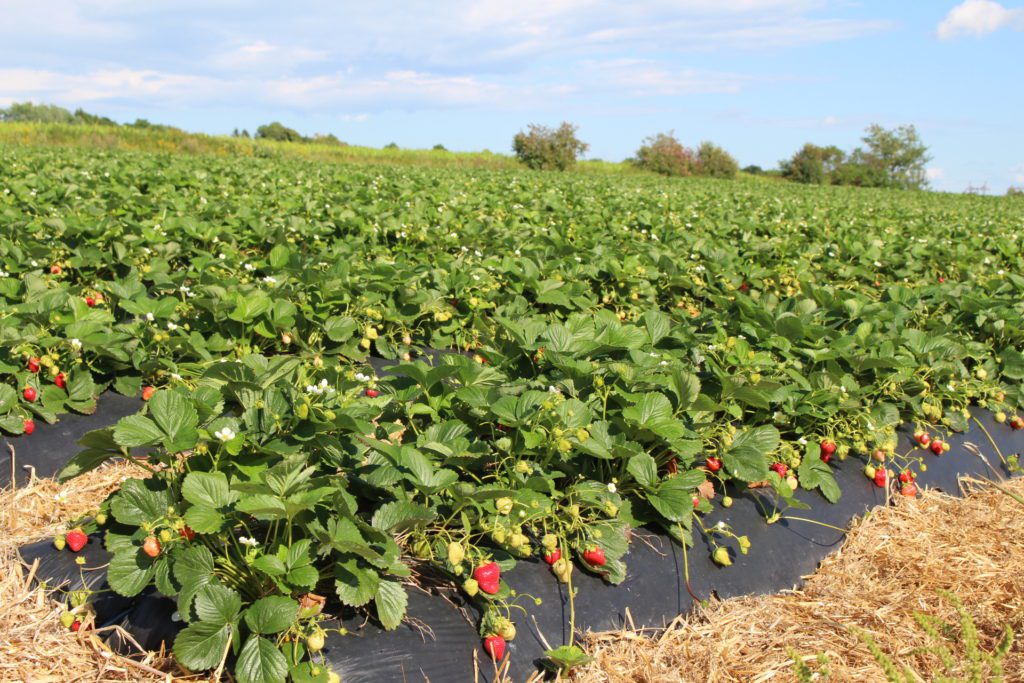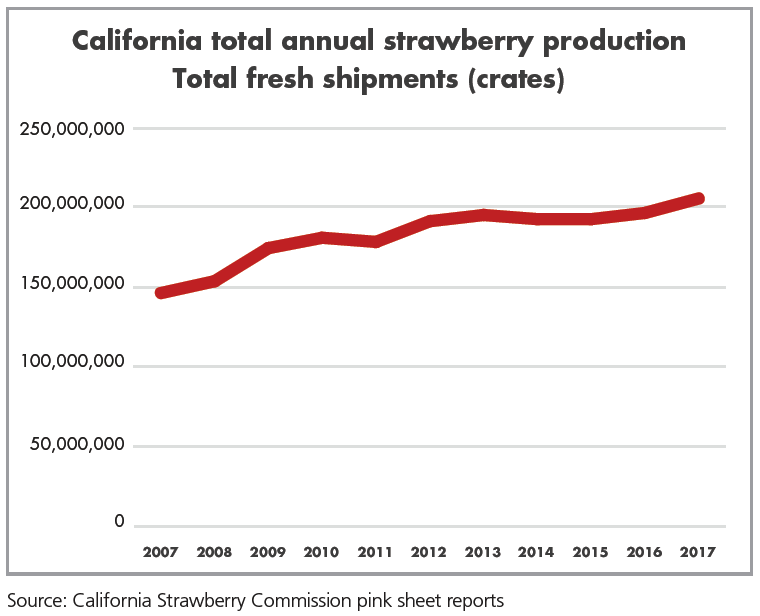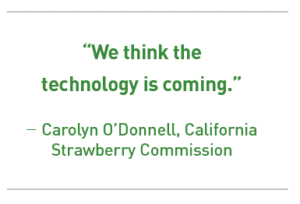

Aug 30, 2018California set for record strawberry harvest
If the weather holds steady, California strawberry growers are lined up for a third consecutive record harvest due to higher-yielding varieties.
“With the optimum weather, weekly shipment volume in summer and fall months is projected to equal or surpass 2017 totals,” according to the California Strawberry Commission (CSC) 2018 acreage survey.
While the growers may not be counting their berries until they’re harvested, their success in recent years makes the commission’s forecast more likely. Both 2016 and 2017 were record production years.

“Over the past three years, planted acreage has declined by 13 percent while total volume has increased by 6 percent,” according to the report. California growers have planted 33,791 total acres – about 11.8 percent of those acres are organic. It’s common for growers to grow several different varieties at the same time.
Growers can set production records while planting fewer acres because they’re planting higher-yielding varieties, said CSC spokeswoman Carolyn O’Donnell. The last two years, the weather has been excellent with little disease pressure and healthy rains in just one part of the growing year.
The Monterey and San Andreas varieties are producing more fruit per acre, she said, and it’s likely the same growth is occurring with unnamed proprietary varieties, planted on 13,632 acres.
Other varieties like Albion have fallen out of favor with California growers. In the fall of 2014, some 5,500 acres of Albion were planted for winter, spring and summer production, but in 2018, that number is down to just 279 acres.
Albion isn’t reliable in its fruiting patterns and will have gaps between blooms, said O’Donnell, although “it produces some really good-looking fruit.”
Strawberry growing is dependent on harvest labor, and as that labor becomes more expensive, California growers continue to research mechanical harvesting. Earlier this year, CSC hosted an automation summit.
Automated or mechanical strawberry harvesters are occasionally spotted in fields, but they’re prototypes, O’Donnell said. Developers are working with growers to improve the machines.
“They’re not quite there,” she said.
A proficient mechanical strawberry harvester will have to “solve several problems,” she said. Among those problems is discerning between red, ripe berries and unripe white berries, and then mechanically picking without damaging the fruit, unripe berries, or the plant.
But, O’Donnell said, participants were encouraged after watching a video of what robots are doing in other industries.
“We think the technology is coming,” she said. In the meantime, a few growers in California have begun growing strawberries on elevated tabletops, which makes harvesting easier for laborers.
– Stephen Kloosterman, FGN Associate Editor















